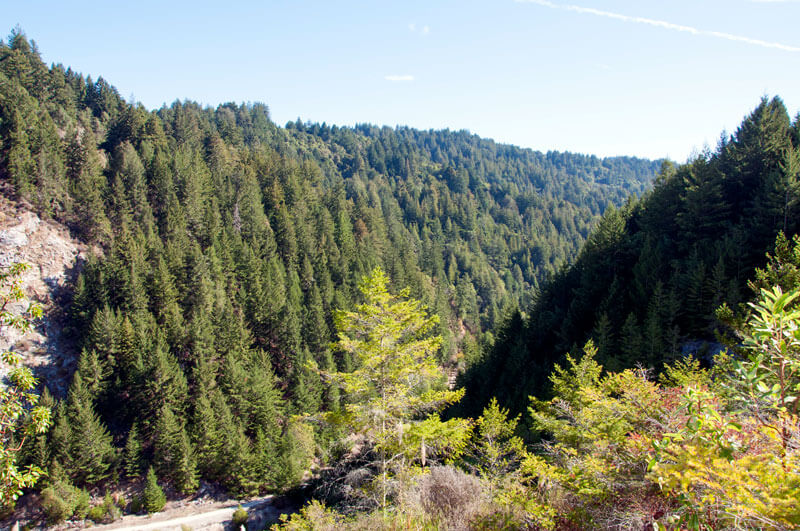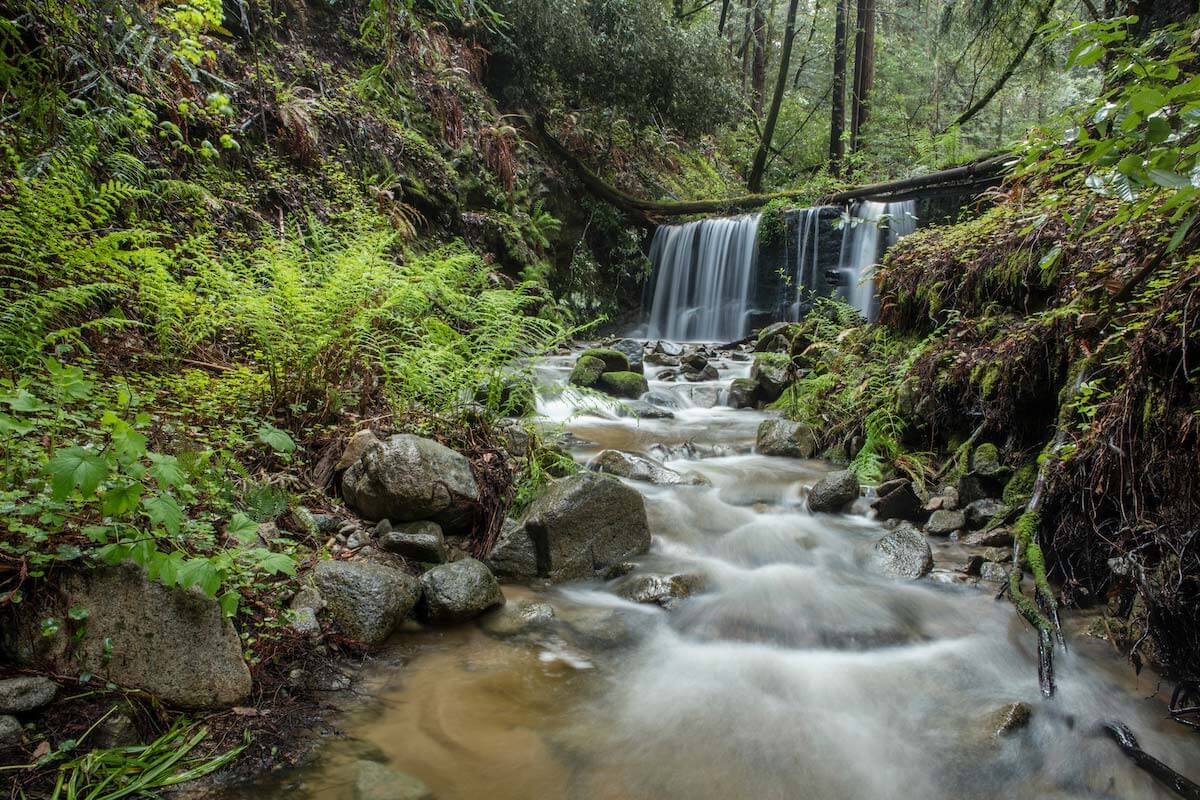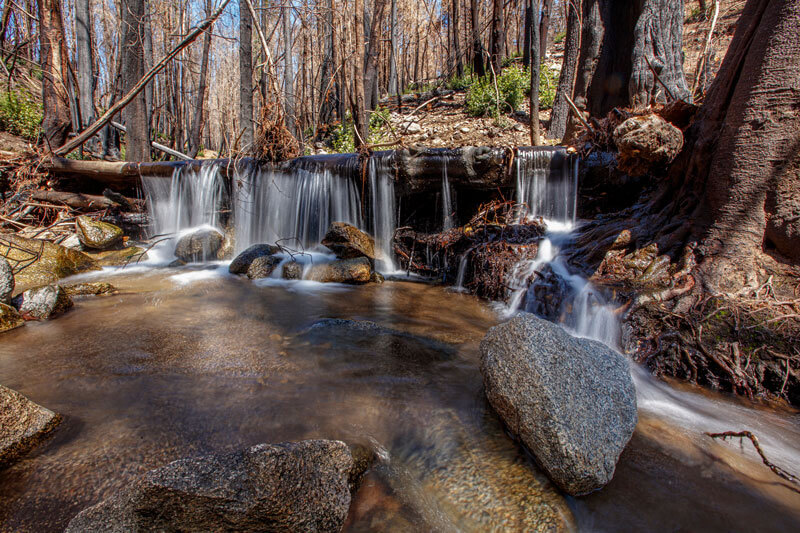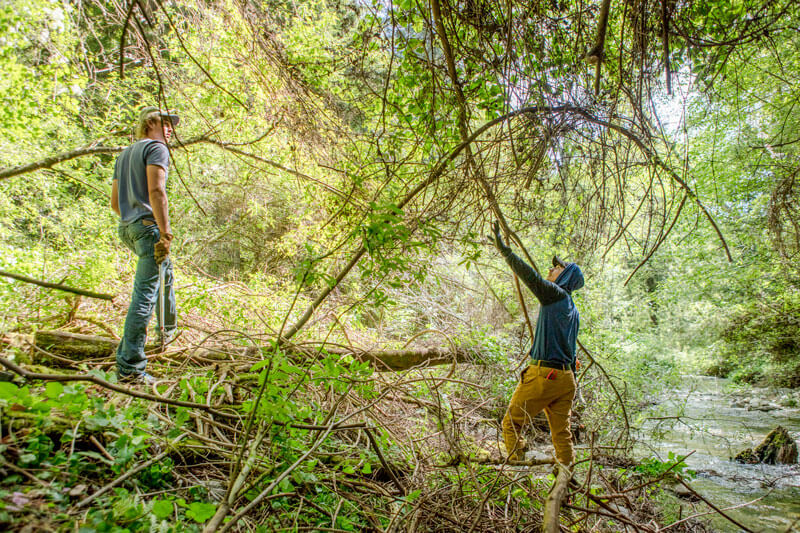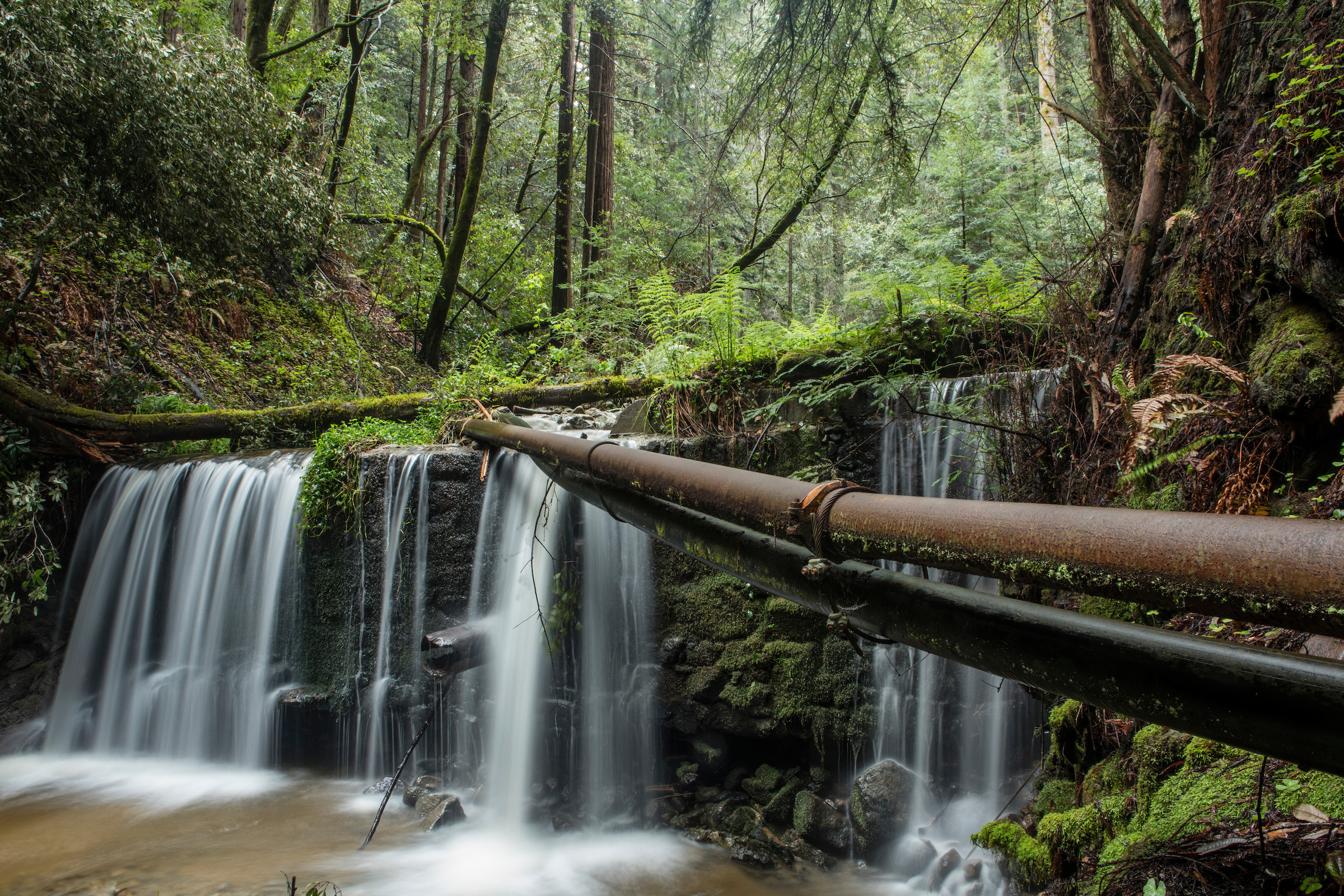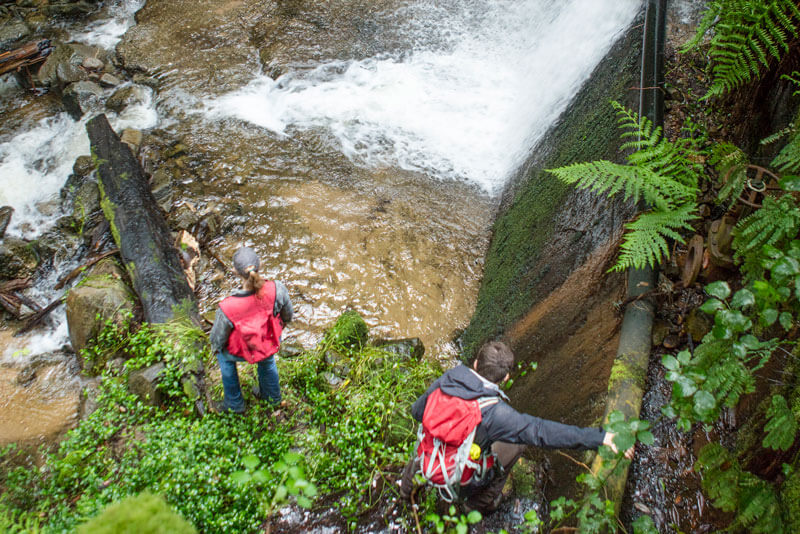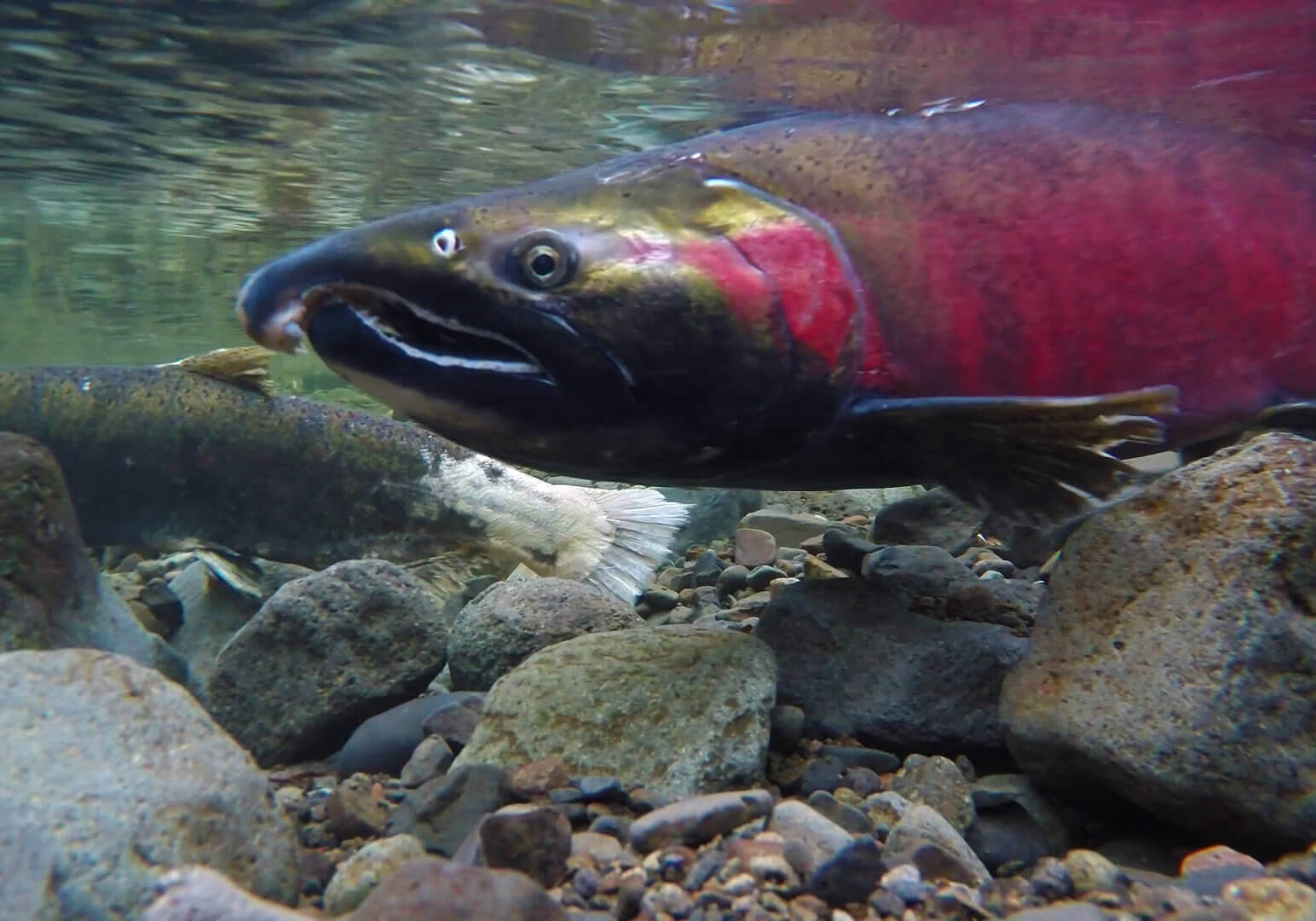Mill Creek Dam and the San Vicente Watershed
photo by Ian Bornarth.
What are Watersheds?
Watersheds are land! Watersheds drain creeks and rainfall to an outlet, such as the ocean. Creeks accumulate water from multiple sources – underground aquifers and springs, rain, and upstream deposits of rainfall, and in the case of the Central Coast of California: fog. Floodplains along creeks can also saturate nearby habitats with rich sources of water and nutrients. And confluences—where waterways like rivers and oceans meet—connect habitats, sometimes over thousands of miles. This is why it is critical to protect and restore watersheds and the habitats that they support.
This is the story of one such watershed, its rare and special features, and the work over many years to restore it to its fullest potential.
The San Vicente Watershed
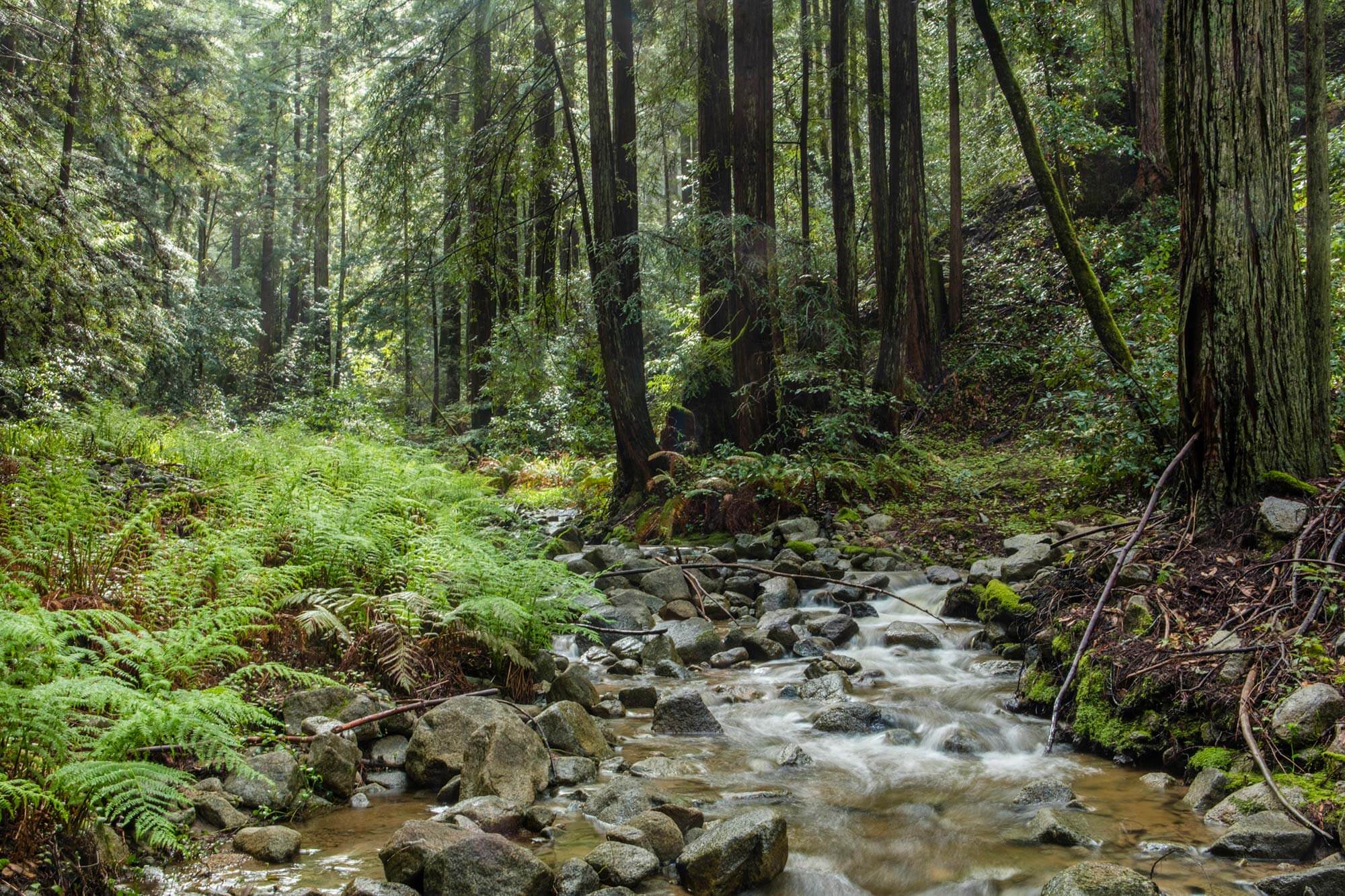
And the confluence of San Vicente with the Pacific Ocean has no lagoon, making its upper reaches accessible all year around—a rare and desirable trait for fish species, such as endangered Coho salmon and threatened steelhead trout.
Over the past ten years—since Sempervirens Fund and Peninsula Open Space Trust purchased San Vicente Redwoods for permanent conservation protection, in partnership with Save the Redwoods League, and Land Trust of Santa Cruz County—restoration of this watershed has been a high priority and has been essential to restoring coast redwood, coastal prairie, and other watershed habitats.
A Dam is Born
In the early 1900s, Mill Creek was dammed to support a small mining camp nestled in the Santa Cruz mountains. Poorly sited, it never worked as intended, so a new dam was installed a quarter-mile upstream, which now serves as the backup water supply for the town of Davenport.
Unfortunately, the Mill Creek dam also trapped the cobble and pebbles that feed sediment beds critical for spawning Coho salmon. Located at the Southern end of their expansive, but imperiled habitat range, Mill Creek became an ineffective spawning location and has stayed that way for more than a century.
A Silver Lining from Catastrophic Fire
San Vicente Redwoods is an 8,532-acre stretch of the largest privately held redwood forest in the Santa Cruz mountains. The CZU Lightning Complex wildfires in August and September 2020 scorched more than 86,500 acres, including all of San Vicente Redwoods’ lands. Water lines for Davenport, which ran across the top of Mill Creek dam, were destroyed. CEMEX, the former owner of the property, funded the re-routing and replacement of their water lines in early 2021 and agreed to let Sempervirens Fund remove the old, defunct dam.
In late March 2021, Sempervirens Fund received a $550,000 grant made through the Open Rivers Fund, a program of Resources Legacy Fund supported by The William and Flora Hewlett Foundation. The grant will be further leveraged by support from individual donors for the ongoing restoration work at San Vicente Redwoods.
By October 2021, the dam was removed, and water and sediment flow were restored.
Removing a Dam and Restoring a Watershed
Among many important outcomes, removing the dam releases the trapped sediment that will improve the spawning conditions not just in Mill Creek, but throughout the creek system.
Thirteen large wood structures, known as “large woody debris,” installed in and among the creek beds at key locations will generate sandbars with the released cobble, giving salmonids ample spawning habitat for the first time in a century. The watershed includes floodplains which have been carefully rid of invasive clematis—a plant that can quickly choke redwoods and streams.
Together, the ecosystem will thrive, benefiting from the increased flow of creek water from above (and below), improving watershed health.
Understanding Habitat Health
Working with San Jose State, UCLA, the Amah Mutsun Land Trust, and other researchers and partners, we are monitoring the impacts of restoration activities—including the removal of the dam—on watershed health and salmonid habitat.
From topographical surveys of the creek channel, to environmental DNA (eDNA) monitoring, to cultural and archaeological exploration throughout the San Vicente watershed, these research efforts will help ensure that restoration efforts have the desired outcomes and inform us about adjustments needed to advance the health of the ecosystem.
Removing the Mill Creek Dam, and restoring this watershed, will have benefits that will outlast us all, and bring ecological prosperity to future generations of species and the habitats they call home.
News: Mill Creek Dam
CEMEX Agrees to Removal of Dam at Mill Creek in Santa Cruz Mountains
Read about the plans and funding.
A Dam Removed: Restoring Watershed Habitat at San Vicente
Look back at the dam removal and learn what's next.
Restoring San Vicente Creek to Save Endangered Salmon
Read more about restoration projects and how they will help fish.
